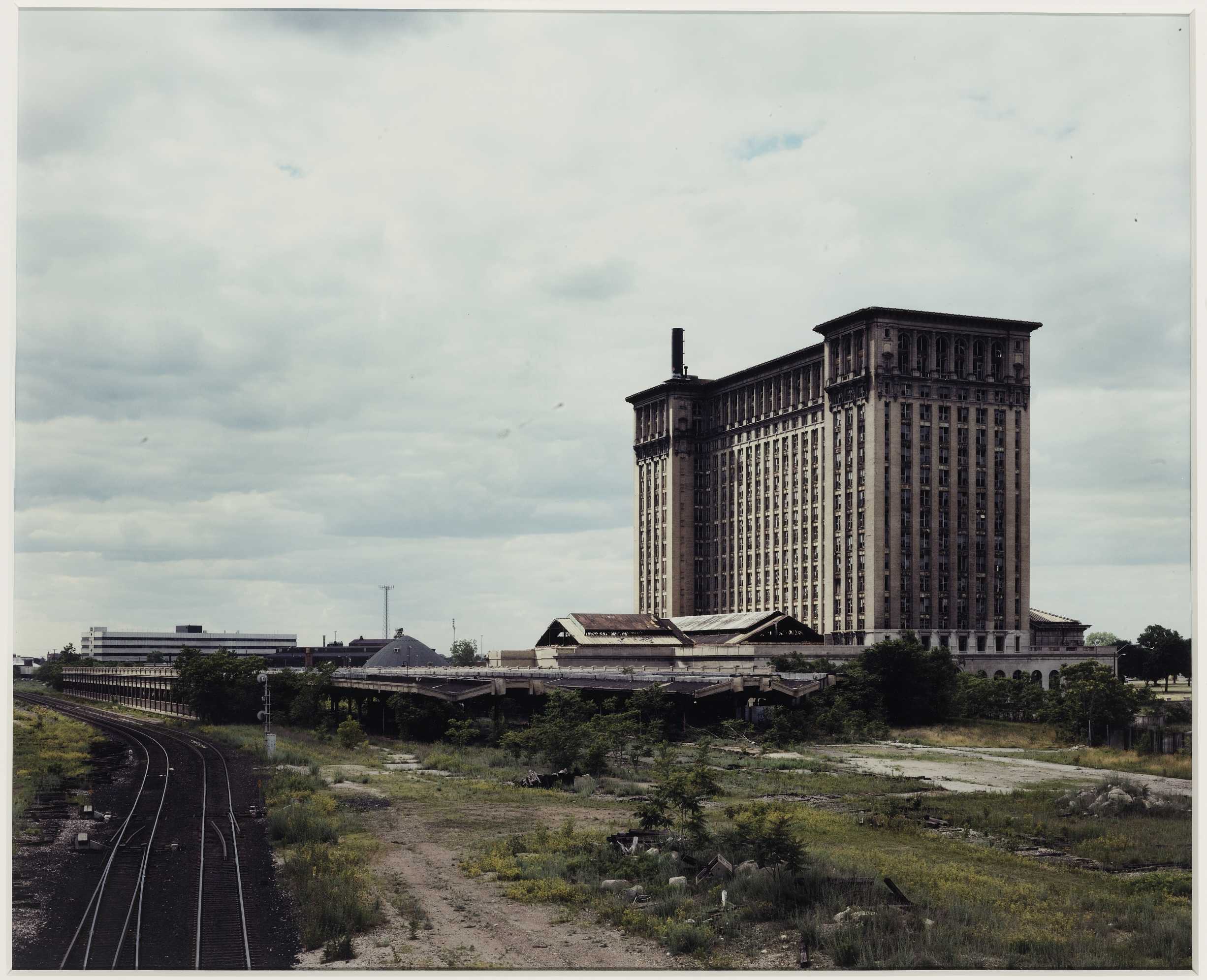A.P. (no.1)
2012 - Photography (Photography)
Erin Shirreff
Erin Shirreff’s A. P. series of prints investigates how objects are “constructed” at the level of the image. For each composite photograph, Shirreff fabricates two sculptural forms from what appear to be metal or plaster, although the precise materials are unidentified. Her sculptures resemble miniature architectural models or renderings of buildings as-yet-to-be fully conceptualized, both elemental and elegant in their use of sharp angles and clean lines. Shirreff then photographs each object against a similarly monochromatic backdrop in her studio, printing each image in rich and high-contrast greyscale. Next, she folds each print in half vertically so that the objects depicted in the image appear to be bisected. Finally, she adjoins the two folded prints at the edge of the fold, creating a new pictorial form from the two bisected images. The hybridized forms depicted in her prints resemble a jarring juxtaposition of geometric sturdiness and malleable plasticity, a cross between Tony Smith’s monolithic minimalism and Alexander Calder’s surreal wiriness. Shirreff uses photography here to imagine sculptural forms that do not exist in real life, and her work employs an illusionistic quality indebted to artistic traditions of trompe l’oeil. But Shirreff also reveals the artifice behind these images, suggesting that all pictorial representations are constructed and, in effect, can never fully document or replicate the experience of encountering an object in “real” perceptual space.
Erin Shirreff creates composite images that interrogate presumed boundaries between artifice and documentary. Originally trained as a sculptor, she works in the expanded field of photography, video, and sculpture, and her practice frequently employs multiple fine arts disciplines at once. Her work reconsiders the limits of sculptural practice by showing how image-based media can effectively be used to render hybridized shapes that do not (and arguably cannot) exist in real life. At the same time, she also reveals how these images are always deliberately constructed, leaving fold lines exposed and obvious discontinuities and aberrances in her composites. In leaving these artificial traces behind, Shirreff’s reminds us that images are always fabricated on some level and that representation itself is an artifice at its core.
Colors:
Other related works, blended automatically

© » KADIST
Rodney Graham
1991Ponderosa Pine IV belongs to a series of large-scale photographs of trees taken by Graham and depicts a particular species that live in Northern California...

© » KADIST
Rodney Graham
1996Tree on the Former Site of Camera Obscura (1996) belongs to a series of large-scale photographs of trees taken by Graham and depicts a particular species that lives in Northern California...

© » KADIST
Yin-Ju Chen
2018Extrastellar Evaluations is a multimedia installation produced during Yin-Ju Chen’s residency at Kadist San Francisco in the spring of 2016...

© » KADIST
Harrell Fletcher
2005The American War , which takes its title from the Vietnamese term for what Americans call the Vietnam War, has toured the United States extensively with the goal of presenting a Vietnamese perspective of that history...

© » KADIST
Yin-Ju Chen
One Universe, One God, One Nation was inspired by Hannah Arendt’s analysis of space exploration and by the astrological horoscope of Chinese political and military leader Chiang Kai-shek (1887-1975)...

© » KADIST
Haegue Yang
2016A steel clothing rack adorned with turbine vents, Moroccan vintage jewelry, pinecones and knitting yarn, these heterogeneous elements are used here to create an exotic yet undefined identity within the work...

© » KADIST
Stan Douglas
1997Michigan Central Station is part of a larger photographic series, Detroit Photos , which includes images of houses, theaters, stadiums, offices, and other municipal structures...

© » KADIST
Yin-Ju Chen
2011This work includes sketches for Extrastellar Evaluations , the project she produced at Kadist...

© » KADIST
Doug Aitken
2009The version of Frontier acquired by the Kadist Collection consists of a single-channel video, adapted from the monumental installation and performance that Aitken presented in Rome, by the Tiber River, in 2009...

© » KADIST
Lynn Hershman Leeson
2017Using the seminal 1958 film Vertigo as a launchpad, Lynn Hershman Leeson explores the blurred lines between fact and fantasy in VertiGhost , a film commissioned by the Fine Arts Museums in San Francisco...

© » KADIST
Hiraki Sawa
2006Hako (2006) depicts a mysterious and dystopic landscape where the world becomes flat: distance between different spaces, depth of field and three-dimensional perceptions are canceled...

© » KADIST
Yoshua Okón
2015Fridge-Freezer is a 2-channel video installation where Yoshua Okón explores the darker side of suburbia, d escribed by the artist as “ the ideal environment for a numb existence of passive consumerism and social a nd environmental disengagement...

© » KADIST
Pedro Reyes
2012Pedro Reyes’s Los Mutantes ( Mutants , 2012) is composed of 170 plates that combine characters from ancient and modern mythologies...







